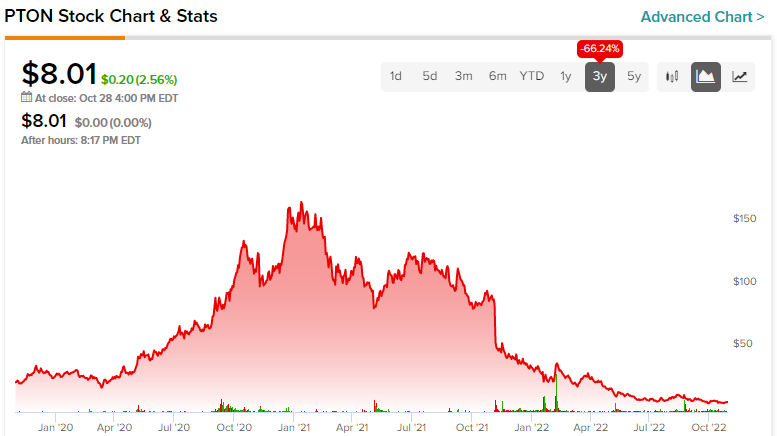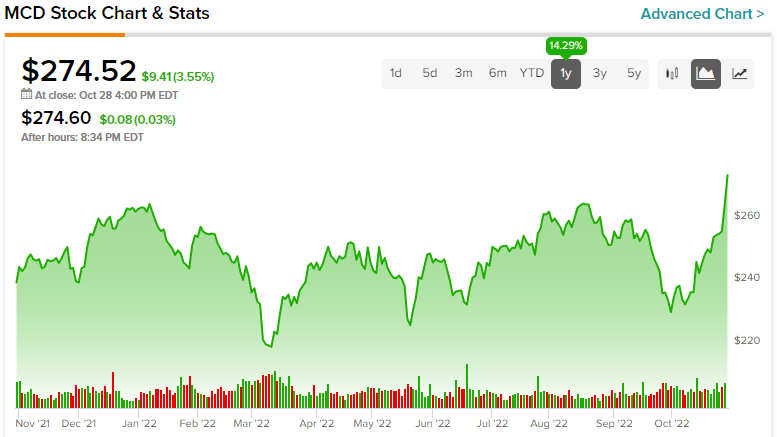Many market watchers have been yelling over recession storm clouds that are seemingly closing in. Undoubtedly, the last thing anybody wants is a rapid tumble as consumer sentiment continues to fade at the hands of the Federal Reserve’s rapid-fire interest rate hikes. Undoubtedly, the Fed has few tools to put inflation away without doing harm to the consumer or employment. At this juncture, it seems like a questionable time to get started investing with your first $10,000, but it may not be a bad idea.
Meet Your ETF AI Analyst
- Discover how TipRanks' ETF AI Analyst can help you make smarter investment decisions
- Explore ETFs TipRanks' users love and see what insights the ETF AI Analyst reveals about the ones you follow.
In an 11-month-old bear market, it seems like the only thing that stocks can do is go down. A sharp turn from what was expected of them in the meme-stock days of 2021, when many market newcomers thought stocks could only rise.
While many new investors may feel better investing after the bear market or recession ends, it’s worth noting that there’s a lot more in the way of long-term gain to be had by braving bear markets. Indeed, buying in the middle of a bear market entails pain. However, in the world of investing, a willingness to feel a bit of near-term pain may be vital in improving your shots at a solid risk-adjusted longer-term gain.
As the saying goes: no pain, no gain.
Know Your Risk Tolerance
Buying stocks was a heck of a lot easier in 2021. That said, such quick and easy gains eventually ended in tears for many who let their greed take control. Undoubtedly, many growth chasers are scarred from this year’s bear market. Other investors who stayed in their lanes (by staying diversified) learned the value of patience and pursuing stocks that are not only (sustainably) profitable but cheap relative to historical and industry averages and in accordance with their personal risk tolerances.
While it may seem wise to stash your $10,000 in a risk-free interest-bearing instrument (this may be fine if you’re not willing to take any stock market risk), I’d argue that it’s worthwhile to diversify across asset classes, especially if you’re a young investor who’s willing to stay invested for the next five to 10 years.
Indeed, investment horizon plays a major role in how you should invest your $10,000. If you’re nearing retirement or have a lofty expenditure (think a mortgage) expected within the next three years, it may be wise to limit your exposure to risk assets (think stocks and REITs), even if it means passing up on any glorious stock market bargains you may see today.
The fact remains that nobody can tell where the stock market will be on a year-to-year basis. The longer your investment horizon, the greater your ability to take on risk is and the more willing you should be to buy stocks amid this bear market.
In this piece, we’ll focus on constructing a $10,000 portfolio for investors willing to stick it out for at least five years.
Balancing Risk with Reward
In a year like 2021, it’s easy to chase rewards with minimal thought for the downside risks. This year, it’s more about risk than reward. If you’re in it for at least five years, though, you should seek to find the risk/reward that suits you. Further, just because you can tolerate risk doesn’t mean you should back up the truck on the hardest-hit tech companies like Peloton (NASDAQ: PTON) with the hopes of a sharp rebound.
Investors with suitable time horizons should take smart and calculated risks. When it comes to the likes of Peloton, questions linger as to whether the company’s debt and cash burn will get the better of it. With profound headwinds, things could easily worsen before they get better, and it doesn’t matter that the stock has already shed more than 95% of its value. A crashed stock does not indicate value to be had. If anything, investors should proceed with caution.

On the flip side, investors with long-term horizons shouldn’t shy away from risk after stocks have already slipped into a bear market. By playing it too safe with defensive dividend stocks, like Crown Castle International (NYSE: CCI) at 35.5x trailing earnings, one can run the risk of overpaying. It doesn’t matter if you’re looking at the most recession-resilient company on the planet; if you overpay for a stock, you can still lose money.
In the middle ground, we have companies like Microsoft (NASDAQ: MSFT) that have made it through downturns only to come out higher just a few years later. Microsoft is one of the high-quality companies that can become more dominant when the “economic tides” fall. Microsoft is a master at taking market share and entering new markets to keep its long-term growth rate strong.
Spreading the Wealth Across Different Risk Appetites
If you’re an investor with $10,000 to put to work, Microsoft is likely a fine selection for a top holding. Personally, I’d not be afraid of putting around a third ($3,000) on the name. Your allocation will (and should) differ depending on various factors, including your tolerance for day-to-day fluctuations.
Microsoft is a truly wonderful business, but steep up-and-down days may be too much for your stomach! That’s why I can’t emphasize this enough: know your risk tolerance, and don’t be afraid to leverage a dollar-cost averaging (DCA) approach if you’re new and require a gauge of how much volatility you can handle.
DCA implies buying your way into your desired allocation (say 30% of the cash you plan to invest) over multiple months (or quarters).
It’s wise to diversify, but at the same time, over-diversification can have its drawbacks and can limit returns. Microsoft is a wonderful company. Also, MSFT is arguably a baby thrown out with the bathwater at around 25x trailing earnings, given the momentum in its Azure cloud business and the long-term upside to be had from gaming.
As for the rest of the portfolio, I’d personally look to diversify across moderately-valued, high-quality consumer staples (think McDonald’s (NYSE: MCD)) that can sail through a recession while enduring less downside than the market averages. They’re not exciting, but they’re terrific portfolio stabilizers, in my opinion.

What About Risk-on Plays?
If you’re young, with a long-term horizon, are seeking to add some heat to your portfolio, and are more than willing to face serious downside risks, risk-on plays may make sense with a small percentage of your principal. Personally, I’d limit such exposure to 5%.
Fallen companies like Peloton are down for good reasons. When momentum is so biased to the downside, it can be tough to turn a corner. If you like the product, have faith in management’s abilities, and are willing to do your own due diligence, scavenging the ground for potential “cigar butts” may not be the worst idea in the world.
Before doing such, though, I’d encourage you to know yourself as an investor and to account for the risks we’ll all face in 2023.
















